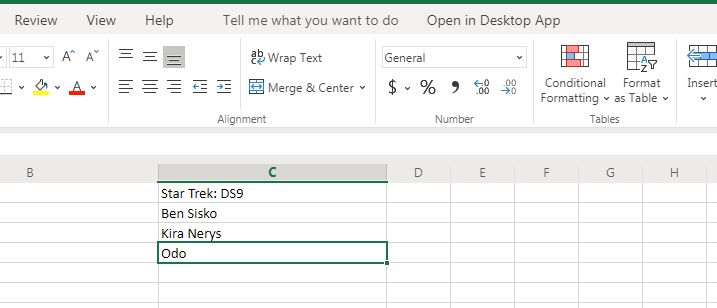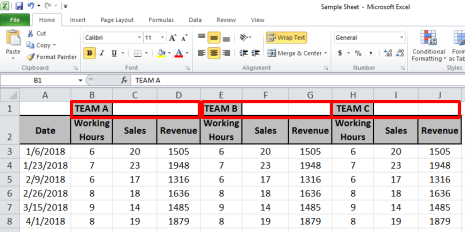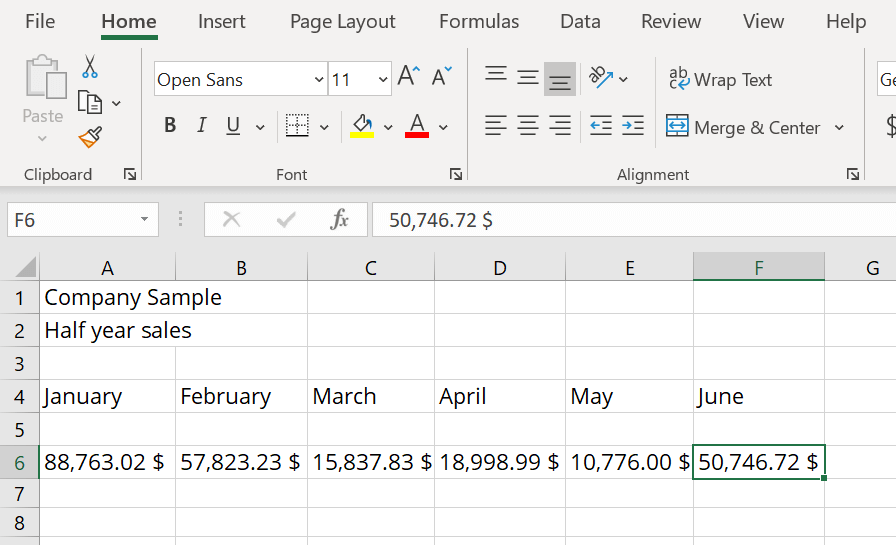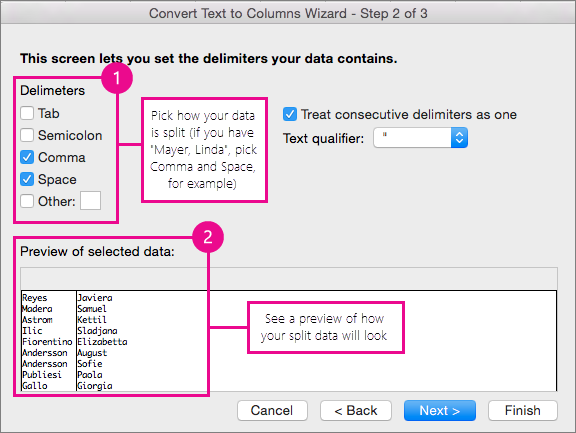

- Where is merge and center in excel how to#
- Where is merge and center in excel code#
- Where is merge and center in excel series#
Worksheet.Range("FirstCell:LastCell").Merge To merge cells with VBA, use a statement with the following structure: You can find additional VBA and Macro Tutorials in the Archives.
Where is merge and center in excel how to#
Learn how to work with worksheets here. 
 Practical VBA applications and macro examples:. Learn about R1C1 and A1 style references here. The following VBA and Macro Tutorials may help you better understand and implement the contents below: References to VBA Constructs Used in this VBA Tutorial.
Practical VBA applications and macro examples:. Learn about R1C1 and A1 style references here. The following VBA and Macro Tutorials may help you better understand and implement the contents below: References to VBA Constructs Used in this VBA Tutorial. Where is merge and center in excel code#
VBA Code to Merge Cells Within a Row Based on Cell Value.  #6: Merge Cells Within a Row Based on Cell Value. VBA Code to Merge Cells Based on Cell Value. This creates a single cell you can then format with shading and borders – and re-align the content within it as desired. So – you can use this feature to center titles across the cells they refer to, or vertically alongside relevant data. So I’ll undo that, and restore the titles. Luckily, Excel warns me of this if I select the range and click any of the Merge options, but to show you how it works, I’ll ignore the warning. So if I were to try to merge, say, the Division titles in cells D19 through D22, only the word East would remain. Then, to re-align the text so it’s not looking odd there in the corner of the box, I’ll click the Middle Align and Center buttons, to place it both horizontally and vertically in the center of the merged cell.Īn important note – when you merge cells, only the content in the upper-most cell in the range is kept. It’s also inherited the fill color from the first cell in the selected range. Now, I’ll click Merge Cells, and the cell is one long cell spanning 3 columns and 6 rows. This block could be merged into a single cell and the title – Division Totals – merged both horizontally and vertically.įirst, let’s Unmerge it, and then select the range from B18 through D23. Going back to Merge Cells – let’s demonstrate that here in cells B18 through D23. Merge Cells – which you’ll use to merge cells not running horizontallyĪnd Unmerge Cells, which returns the merged cells to their individual, pre-merged state, the text in the left-most cell returned to its original alignment. Merge Across – which creates the merged cell but doesn’t re-align the text in the left-most cell in the range Now, you’ve probably noticed there’s a drop arrow to the right of the Merge & Center button, and that’s for the other options this feature offers. Last, I’ll do it one more time for the Division Totals cell and adjacent cells in B18 through D18. I’ll repeat that for the Sales Rep heading, and then for the remaining 3 headings in Row 4, each heading merged into a cell that spans the columns in that section. When I click the Merge & Center button, that’s what happens – the cells are merged in a single cell and the contents in the left-most cell is centered within the new, long cell. Now, let’s select the title in cell B2 and select all the cells next to it, out to column O. Let’s switch to a version of the worksheet with no Merge & Center applied. Sales Rep spans cells B4 through D4, and Quarterly Totals spans cells E4 through I4. Other cells have been merged and centered here – the title of each of the 4 sections of the report are merged to span the columns in each section.
#6: Merge Cells Within a Row Based on Cell Value. VBA Code to Merge Cells Based on Cell Value. This creates a single cell you can then format with shading and borders – and re-align the content within it as desired. So – you can use this feature to center titles across the cells they refer to, or vertically alongside relevant data. So I’ll undo that, and restore the titles. Luckily, Excel warns me of this if I select the range and click any of the Merge options, but to show you how it works, I’ll ignore the warning. So if I were to try to merge, say, the Division titles in cells D19 through D22, only the word East would remain. Then, to re-align the text so it’s not looking odd there in the corner of the box, I’ll click the Middle Align and Center buttons, to place it both horizontally and vertically in the center of the merged cell.Īn important note – when you merge cells, only the content in the upper-most cell in the range is kept. It’s also inherited the fill color from the first cell in the selected range. Now, I’ll click Merge Cells, and the cell is one long cell spanning 3 columns and 6 rows. This block could be merged into a single cell and the title – Division Totals – merged both horizontally and vertically.įirst, let’s Unmerge it, and then select the range from B18 through D23. Going back to Merge Cells – let’s demonstrate that here in cells B18 through D23. Merge Cells – which you’ll use to merge cells not running horizontallyĪnd Unmerge Cells, which returns the merged cells to their individual, pre-merged state, the text in the left-most cell returned to its original alignment. Merge Across – which creates the merged cell but doesn’t re-align the text in the left-most cell in the range Now, you’ve probably noticed there’s a drop arrow to the right of the Merge & Center button, and that’s for the other options this feature offers. Last, I’ll do it one more time for the Division Totals cell and adjacent cells in B18 through D18. I’ll repeat that for the Sales Rep heading, and then for the remaining 3 headings in Row 4, each heading merged into a cell that spans the columns in that section. When I click the Merge & Center button, that’s what happens – the cells are merged in a single cell and the contents in the left-most cell is centered within the new, long cell. Now, let’s select the title in cell B2 and select all the cells next to it, out to column O. Let’s switch to a version of the worksheet with no Merge & Center applied. Sales Rep spans cells B4 through D4, and Quarterly Totals spans cells E4 through I4. Other cells have been merged and centered here – the title of each of the 4 sections of the report are merged to span the columns in each section. Where is merge and center in excel series#
It’s used mainly for merging a series of cells in a row, typically the cell containing a title and the cells next to that that span the width of the data within that worksheet.įor example, on this worksheet, note that the Title, Sales Report, is centered in one long cell, spanning the cells in Row 2 from column B through O. Merge and Center is a very handy button, found on the Home tab, in the Alignment section of the ribbon.








 0 kommentar(er)
0 kommentar(er)
